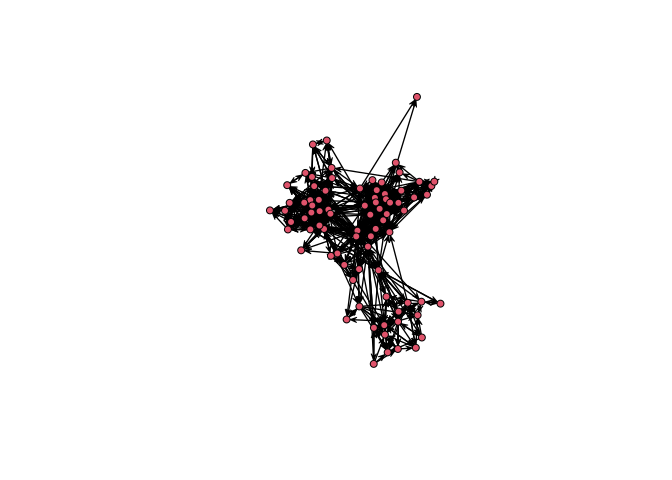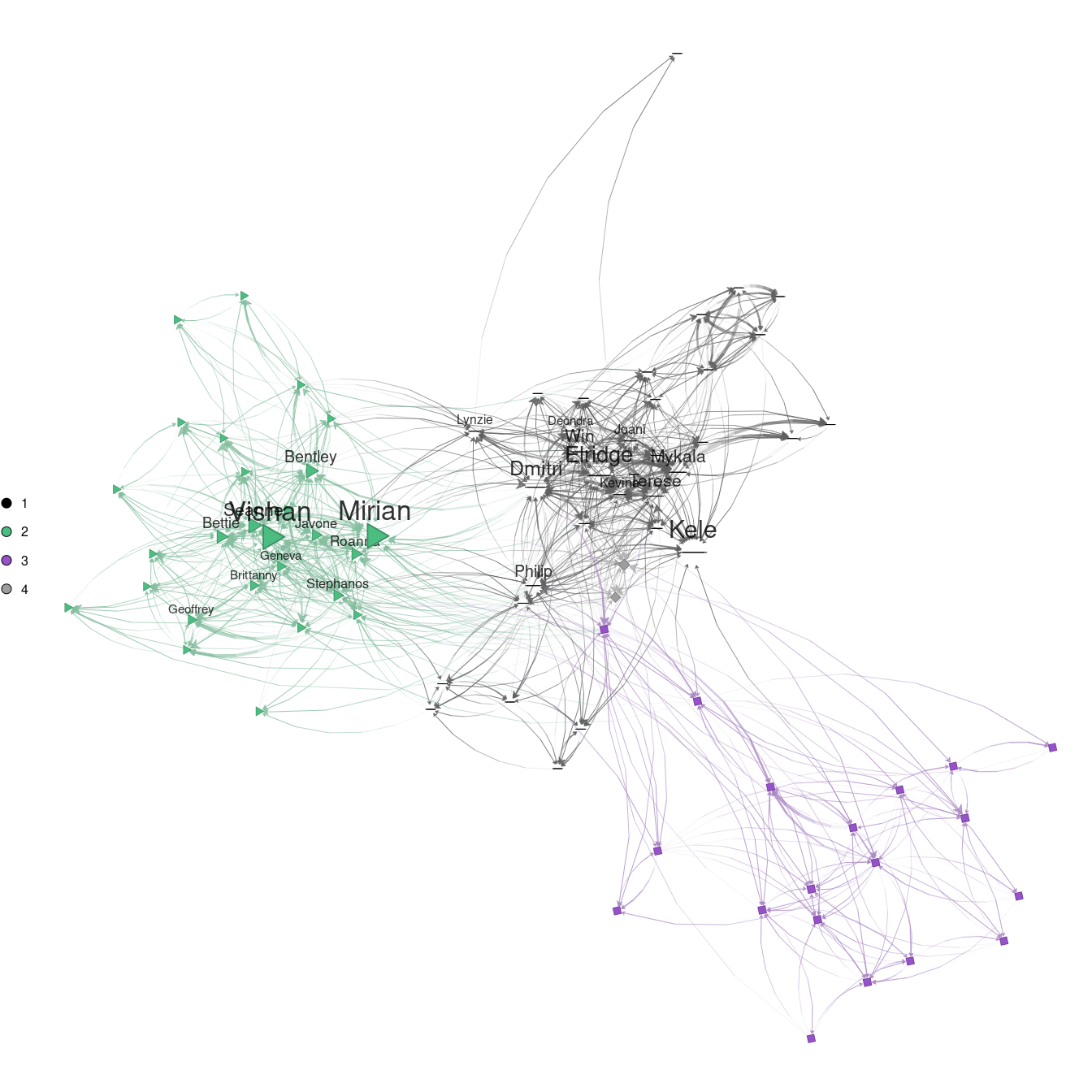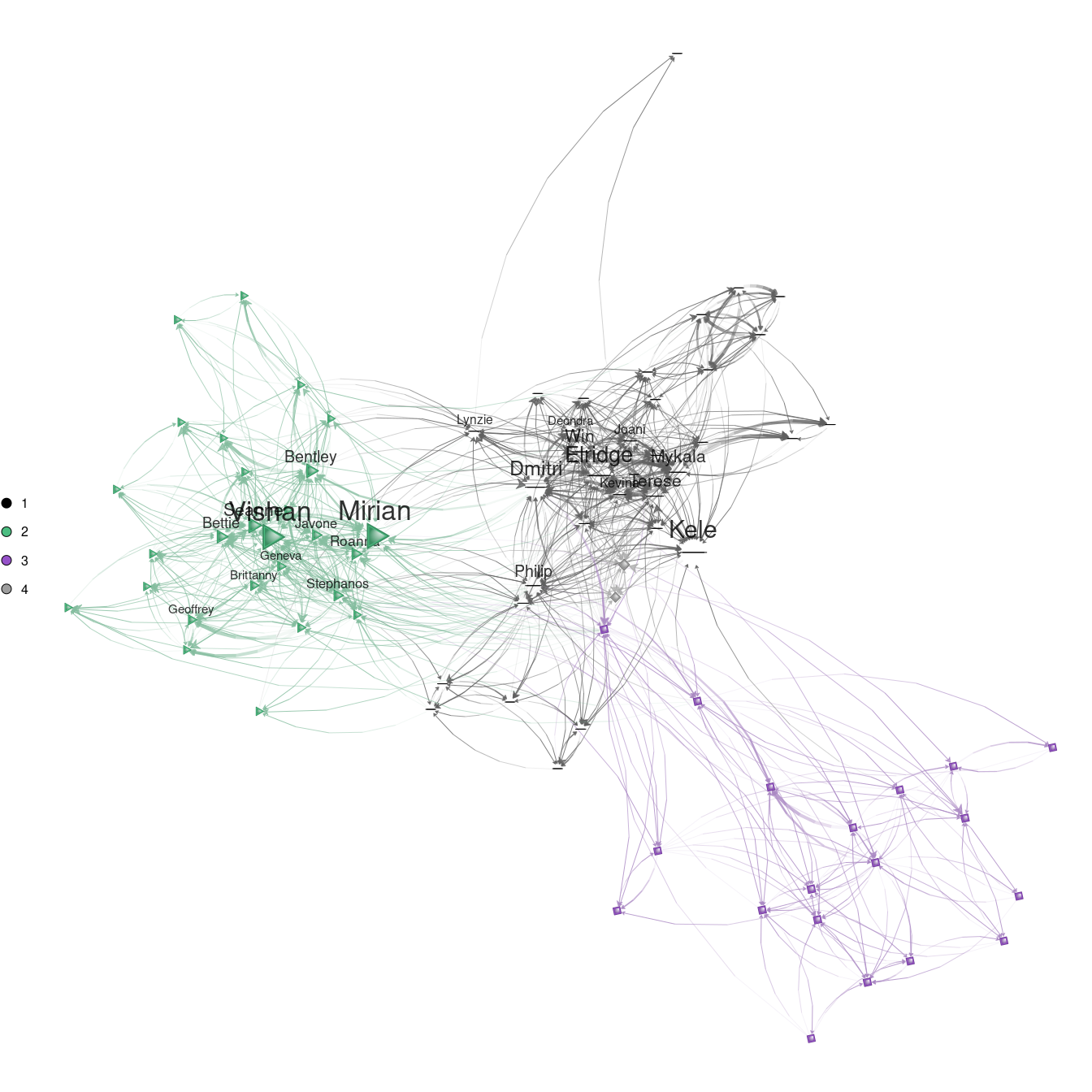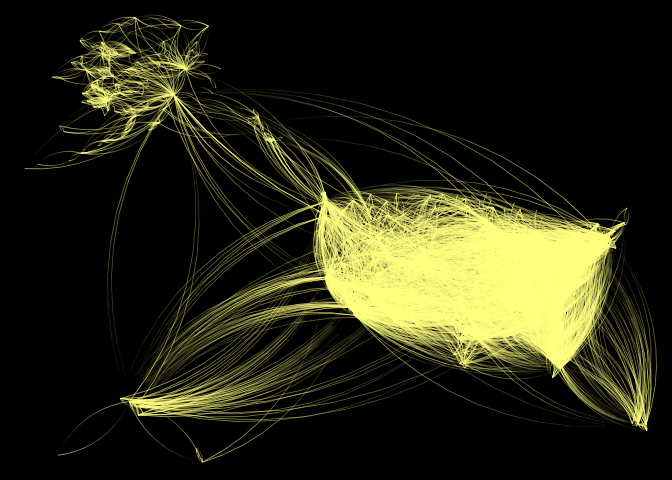



An alternative graph visualization tool that emphasizes aesthetics, providing default parameters that deliver out-of-the-box lovely visualizations.
Some features:
The package uses the grid plotting system (just like
ggplot2).
You can install the released version of netplot from CRAN with:
install.packages("netplot")And the development version from GitHub with:
# install.packages("devtools")
devtools::install_github("USCCANA/netplot")This is a basic example which shows you how to solve a common problem:
library(igraph)
#>
#> Attaching package: 'igraph'
#> The following objects are masked from 'package:stats':
#>
#> decompose, spectrum
#> The following object is masked from 'package:base':
#>
#> union
library(netplot)
#> Loading required package: grid
#>
#> Attaching package: 'netplot'
#> The following object is masked from 'package:igraph':
#>
#> ego
set.seed(1)
data("UKfaculty", package = "igraphdata")
l <- layout_with_fr(UKfaculty)
#> This graph was created by an old(er) igraph version.
#> Call upgrade_graph() on it to use with the current igraph version
#> For now we convert it on the fly...
plot(UKfaculty, layout = l) # ala igraph
V(UKfaculty)$ss <- runif(vcount(UKfaculty))
nplot(UKfaculty, layout = l) # ala netplot
sna::gplot(intergraph::asNetwork(UKfaculty), coord=l)
# Random names
set.seed(1)
nam <- sample(babynames::babynames$name, vcount(UKfaculty))
ans <- nplot(
UKfaculty,
layout = l,
vertex.color = ~ Group,
vertex.nsides = ~ Group,
vertex.label = nam,
vertex.size.range = c(.01, .03, 4),
bg.col = "transparent",
vertex.label.show = .25,
vertex.label.range = c(10, 25),
edge.width.range = c(1, 4, 5),
vertex.label.fontfamily = "sans"
)
# Plot it!
ans
Starting version 0.2-0, we can use gradients!
ans |>
set_vertex_gpar(
element = "core",
fill = lapply(get_vertex_gpar(ans, "frame", "col")$col, \(i) {
radialGradient(c("white", i), cx1=.8, cy1=.8, r1=0)
}))
# Loading the data
data(USairports, package="igraphdata")
# Generating a layout naively
layout <- V(USairports)$Position
#> This graph was created by an old(er) igraph version.
#> Call upgrade_graph() on it to use with the current igraph version
#> For now we convert it on the fly...
layout <- do.call(rbind, lapply(layout, function(x) strsplit(x, " ")[[1]]))
layout[] <- stringr::str_remove(layout, "^[a-zA-Z]+")
layout <- matrix(as.numeric(layout[]), ncol=2)
# Some missingness
layout[which(!complete.cases(layout)), ] <- apply(layout, 2, mean, na.rm=TRUE)
# Have to rotate it (it doesn't matter the origin)
layout <- netplot:::rotate(layout, c(0,0), pi/2)
# Simplifying the network
net <- simplify(USairports, edge.attr.comb = list(
weight = "sum",
name = "concat",
Passengers = "sum",
"ignore"
))
# Pretty graph
nplot(
net,
layout = layout,
edge.width = ~ Passengers,
edge.color = ~
ego(col = "white", alpha = 0) +
alter(col = "yellow", alpha = .75),
skip.vertex = TRUE,
skip.arrows = TRUE,
edge.width.range = c(.75, 4, 4),
bg.col = "black",
edge.line.breaks = 10
)